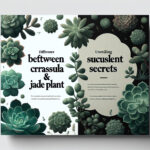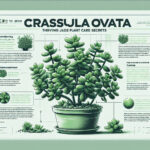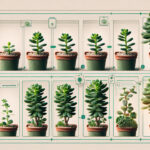Introduction to the Jade Plant
Dive into the captivating world of Crassula ovata, commonly known as the Jade Plant. Explore its popularity as an indoor plant, its symbolism, and the curiosity around its origin. Revered for its thick, lush leaves that seem to encapsulate the very essence of prosperity and fortune, the Jade Plant is more than just a common houseplant; it’s a living emblem of growth and renewal.
The Jade Plant has made its way into homes and hearts, thriving quietly on windowsills and desks. Nursery tales often mention its knack for surviving with minimal care, making it a favourite among both seasoned gardeners and those with a penchant for greenery but not the green thumb. Intriguingly, the lore of the Jade Plant spans continents, snaking its way into cultural narratives and personal anecdotes alike.
But what about its roots? Literally. The Jade Plant whispers a tale of diverse landscapes and hardy existence, and it’s a story worth exploring. Where do these resilient beauties hail from? What secrets do their verdant leaves hold about their journey from their natural habitat to the nooks of our living spaces? It’s a tale that weaves the magic of nature with the history of human cultivation.
Feeling curious about how this plump-leafed plant began its global voyage? Let’s get a glimpse of the mystery through an engaging visual story:
It’s remarkable to observe how the Jade Plant has not just adapted to living indoors but has flourished, inspiring an array of horticultural practices and becoming a staple in the plant enthusiast’s collection. Whether it’s perched elegantly in a terracotta pot or styled into a majestic bonsai, this resilient plant continues to captivate and charm gardeners and non-gardeners alike.
The Jade Plant’s simplicity in care belies its complexity in cultural and botanical significance. But don’t be fooled by its widespread availability; there’s a rich history to the humble Crassula ovata that’s waiting to be uncovered. As we delve deeper into its origins, we’ll discover the environmental and historical factors that molded the Jade Plant into the beloved green companion it is today.
A Symbol Across Cultures
In many cultures, the Jade Plant is seen as a symbol of good luck and prosperity, often gracing shops and homes with its presence. The thick, coin-shaped leaves are reminiscent of jade stones, which are also associated with wealth and positive energy. With such an auspicious reputation, it’s no wonder that the Jade Plant often finds its way into the lives of many as a thoughtful gift or a personal investment in one’s well-being.
But beyond the cultural allure lies a botanical wonder that has intriguingly adapted to thrive under the loving care of humans. It’s a living testament to nature’s resilience and versatility, and its journey from the wild landscapes to our cultivated spaces is a remarkable story of plant migration and adaptation—a story we will continue to explore throughout this article.
The Jade Plant’s Geographic Ancestry
Let’s delve into the green and lush origin story of the ever-popular Crassula ovata, commonly known as the Jade Plant. Picture the breathtaking landscapes of South Africa, where these robust succulents first sank their roots into the ground. South Africa, with its vast diversity in climate and terrain, provided the perfect cradle for the jade plant, bestowing it with those thick, glossy leaves and stout stems that we’ve all come to admire.
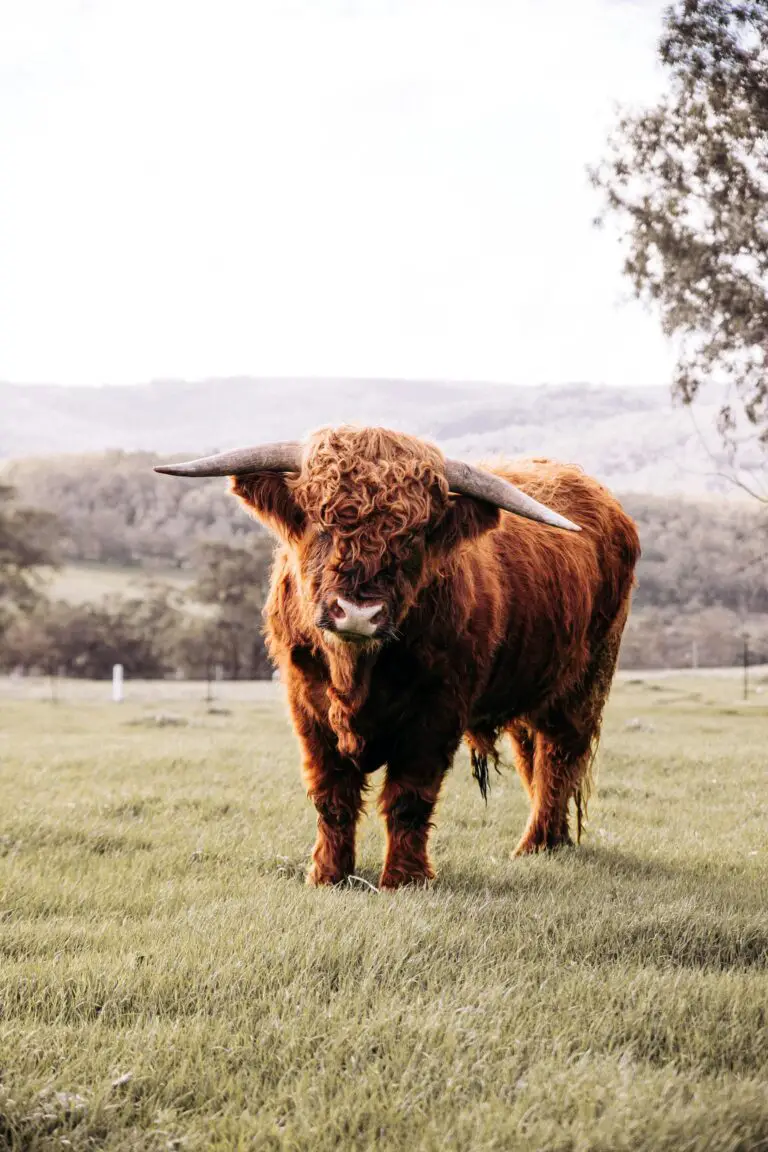
Imagine a place where the sun bakes down on rocky outcrops, and the air is dry – that’s the local supermarket for jade plants. Here, in these tough environments, they learned to hoard water within their fleshy leaves, teaching us all a lesson in resilience. Each plant is a little green warrior, with built-in drought armor, surviving and thriving where other plants might wilt away.
What makes the jade plant such a fantastically adaptable houseguest in our homes is this very past. Transitioning from the sun-drenched cliffs to our living rooms, they bring a piece of their African heritage to our personal sanctuaries. It’s no surprise they’ve become a global sensation, with many plant enthusiasts enjoying the long-lived nature of these succulents, sharing the space with us for years, even decades.
We can’t help but marvel at the journey of the jade plant. From their wide-open spaces in South Africa to the cozy corners of our apartments, they’ve weathered journeys longer than most domestic flights. They tucked into the earth’s canvas there, evolving over time to become the charming green buddies that now grace our window sills and desks, asking for nothing more than some sunlight and a sparing sip of water.
Historical Journey of the Jade Plant
Let’s embark on a retrospective road trip, tracing the roots of the evergreen gem we call the jade plant! Diving into the history, we discover a tale of botanical wanderlust, originating in the arid landscape of South Africa and Mozambique. This hardy succulent, known scientifically as Crassula ovata, is much more than your average houseplant; it’s a silent witness to centuries of change as it transitioned from wild arid environs to ornamenting homes worldwide.
Imagine the jade plant’s story as a literal journey from rugged cliffs under the African sun, journeying over seas and across continents. It’s a saga that might mirror the adventures of storied explorers, albeit at a decidedly more geological pace! Donned with fleshy, glossy leaves that store water, the jade plant mastered survival in the most parched environments, priming it perfectly for a global expedition.
As we bring this green traveler into our homes, it’s impossible to overlook its symbolic presence. In many cultures, the jade plant is seen as a harbinger of wealth and prosperity—perhaps a subtle nod to its resilience and ability to flourish with minimal care. It’s not merely living decor but an emblem of good fortune and enduring beauty.
Even today, the popularity of the jade plant continues to soar, and it’s not hard to see why. It’s as if each sturdy stem and plump leaf carry whispers of ancient soil and sun-drenched landscapes into modern living spaces. The next time you brush past its waxy leaves, consider the historical odyssey this humble plant has undertaken to brighten your windowsill.
Now that we’ve delved into the historical journey of the jade plant, you might find yourself looking at your own leafy companion with newfound awe. Just remember: though it sits quietly in your home, it’s a vibrant echo of the natural world and history it’s navigated to get here. A living testament to survival, adaptation, and beauty—it’s no wonder the jade plant continues to capture hearts many years after its first steps out of the wild.
Cultural Ties and Traditions
Delving into the rich tapestry of jade plant history, one quickly discovers that these succulent beauties are more than just eye-catching greenery. Far from being mere decorative elements, jade plants have woven their way into the very fabric of cultural traditions across various societies. They hold a cherished place in the sphere of traditional medicine, acting as herbal remedies whispered through generations.
The fascination with these plump-leafed plants is palpable in rituals and folklore, where they often symbolize a smooth pathway to financial success. This belief is especially prevalent in Asian cultures, where a jade plant gracing the home is thought to invite prosperity and fortune. But the allure of jade plants doesn’t stop at the borders of Asia; their reputation as symbols of wealth and wellbeing has permeated around the globe, finding resonance in the occidental households and offices striving for a touch of feng shui elegance.
Consider the captivating scene during the Lunar New Year celebrations: a jade plant sitting prominently as a centerpiece amidst the festivities, its glossy leaves catching the light—a beacon of optimism for a prosperous year ahead. It’s in these moments that the humble Crassula ovata transcends the bounds of botany, becoming an emblem of hope and harmony.
For those with an affinity for the botanical, a deeper appreciation ensues when they admire jade plants in , where their significance is celebrated in full glory. Here, the jade plant isn’t just a plant; it’s a historical thread connecting people to their love for nature and the wisdom of their ancestors.
Now, let’s bring this context to life with a visual treat—a video showcasing the cultural significance of these revered plants:
Jade Plants in Modern Gardening
Stepping into the world of contemporary gardening, the jade plant has carved itself a niche, charming hobbyists and experts alike with its resilience and evergreen splendor. Taking root in modern landscapes, this versatile succulent has become a poster child for plant enthusiasts seeking beauty and sustainability in their green spaces. Let’s delve into how the jade plant is making its mark in today’s gardening trends.
Integrating Jade Plants into Contemporary Garden Design
Modern gardeners are constantly in pursuit of blending aesthetics with ease of maintenance, and the jade plant fits this bill flawlessly. Renowned for its thick, jade-green leaves and sturdy branches, it serves as both a stand-alone piece of natural art and a companion among flower beds. In urban balconies where space is at a premium, potted jade plants offer a lush, miniature landscape, proving that green thumbs don’t necessarily need wide-open spaces to flourish.
Including jade plants in living walls and terrariums is another trend catching on like wildfire. These succulents adapt remarkably well to constrained environments, bringing a touch of verdant exuberance to modern, minimalist homes. Plus, you’ll often spot them in office spaces, where they enliven desks and purify the air, making them a practical addition to the workforce’s daily surroundings.
Popular Varieties and Their Unique Charms
The classic Crassula ovata may be the archetype, but myriad varieties of jade plants now adorn gardens and homes with their unique twists. The ‘Gollum’ variety, with its tubular leaves, conjures images of undersea coral, perfect for a nautical-themed garden space. Meanwhile, ‘Hobbit’s’ spoon-shaped leaves offer a whimsical touch to any setting. Eclectic and diverse, these popular cultivars exemplify the versatility and adaptability of the jade plant species.
Avid collectors and casual plant lovers alike rave about the ‘Variegata,’ flaunting its cream-striped foliage, and the ‘Blue Bird,’ with a glaucous hue that seems otherworldly. Each type brings its own personality to the table, making the jade plant not just a botanical choice but a statement of style and preference.
Jade Plants and Sustainable Xeriscaping
In the face of climate change and water scarcity, xeriscaping is a gardening philosophy rapidly gaining ground. Here, jade plants stand out as exemplary candidates. Their drought tolerance makes them ideal for water-wise gardens, designed to conserve every precious drop. As a hearty succulent, the jade plant thrives in dry conditions, and its ability to store water in its leaves is nothing short of a natural marvel.
Real-life examples of xeriscaping marvels often feature jade plants as a cornerstone. For instance, in arid regions or water-restricted areas, jade plants maintain lush appearances with minimal hydration. Gardeners in regions like California and Texas are particularly fond of these hardy succulents, which not only survive but thrive, even when rainfall is a rare event.
In the grand stage of modern gardening, the jade plant has undoubtedly emerged as a leader in combining form with function. Its ease of care, attractive appearance, and ecological friendliness secure its place in the hearts of gardeners looking to create sustainable, yet stunning, landscapes. As they continue to gain popularity, it’s crystal clear that jade plants carry with them the essence of both tradition and innovation—a leafy gem in the crown of contemporary horticulture.
Unearth the Roots: Discovering the Origin of Jade Plants
Tips for Growing Jade Plants
Imagine a succulent with lush, jade-colored leaves sparkling in your sunlit living room, evoking a sense of tranquility and the natural splendor of its faraway homeland. Yes, we’re talking about the resplendent jade plant, a perennial favorite among indoor plant enthusiasts. Let’s dig into some green-thumbed wisdom to help your little slice of paradise flourish.
Sunlight might as well be the jade plant’s best friend. Perch your potted companion by a south-facing window where it can bask in the bright, indirect light. Be mindful, though, that the soft leaves can sunburn under the harsh afternoon rays, so a gentle morning sunbathe is preferable. Remember, the right amount of glow is the secret to those jewel-toned leaves.
When it comes to hydration, your jade plant prefers a ‘less is more’ approach. Overwatering is a common faux pas among budding gardeners. Envision a desert after the rare rain—this is how your watering schedule should feel. Let the topsoil dry out completely before giving it a deep drink; think of it as a thirst-quenching gulp after a long, dry spell.
Your jade’s roots crave a comfortable home, too, which means well-draining soil is imperative. A mix that mimics its natural, gritty environment will ensure any excess water has an escape route. Avoid waterlogged woes by choosing a cactus or succulent blend from your local gardening shop, guaranteed to keep those roots happy and healthy.
Despite your best efforts, occasionally you might run into a few issues—drooping leaves, soft spots, or lackluster growth. Don’t fret! These are often just signs that your plant pal is pleading for a better care routine. A quick reassessment of your watering habits, light exposure, and soil conditions usually remedies the situation. And remember, the hardy jade is forgiving; with a bit of TLC, it’ll bounce back in no time.
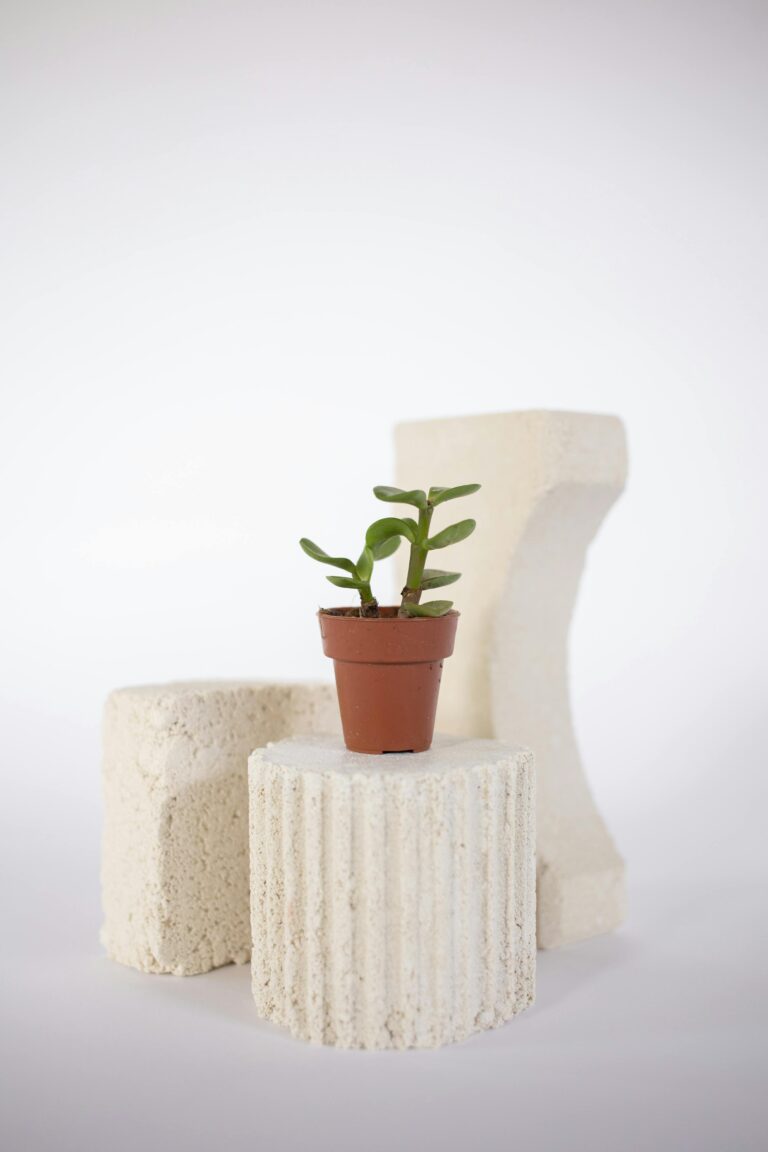
Frequently Asked Questions
Ever wondered where jade plants are originally from? Well, you’re not alone! Many green thumbs and succulent enthusiasts ask similar questions, eager to learn more about these plump, green companions often spotted comforting the corners of homes and offices. Let’s dig into some of the most commonly pondered queries about these resilient beauties.
What’s the Origin Story of Jade Plants?
Jade plants hail from the warm and arid regions of South Africa. They’ve adapted to not only survive but thrive in tough conditions, storing water in their glossy leaves to weather the droughts. Imagine them as the camels of the plant world, but instead of humps, they’ve got fleshy leaves!
How Did Jade Plants Spread Across the Globe?
Thanks to human fascination with their easy care and perceived luck-bringing qualities, jade plants have been passed from one plant lover to another, slowly but surely making their way around the world. Sailors, traders, and adventurers might have carried these succulents across oceans and continents as a token of good fortune for their travels.
Are Jade Plants Really a Symbol of Luck?
Certainly! In many cultures, jade plants are known as ‘money plants’ or ‘lucky plants.’ It’s not uncommon to find a jade plant perched on a store’s front desk or a living room’s side table, its presence quietly whispering promises of prosperity and success. Whether it’s true or not, who can resist a bit of green positivity?
While we’re on the topic of these popular potted pals, why not take a peek at how they can be propagated? Check out this informative video that showcases the simplicity of growing new jade plants from cuttings. It’s like watching magic unfold, right in your own home!
There you have it! The jade plant’s story is as fascinating as its appearance. So next time you water your succulent friend, remember, you’re nurturing a piece of botanical history that has traveled continents to find a home with you. Keep those questions coming, and let’s continue exploring the enchanting world of jade plants together!
